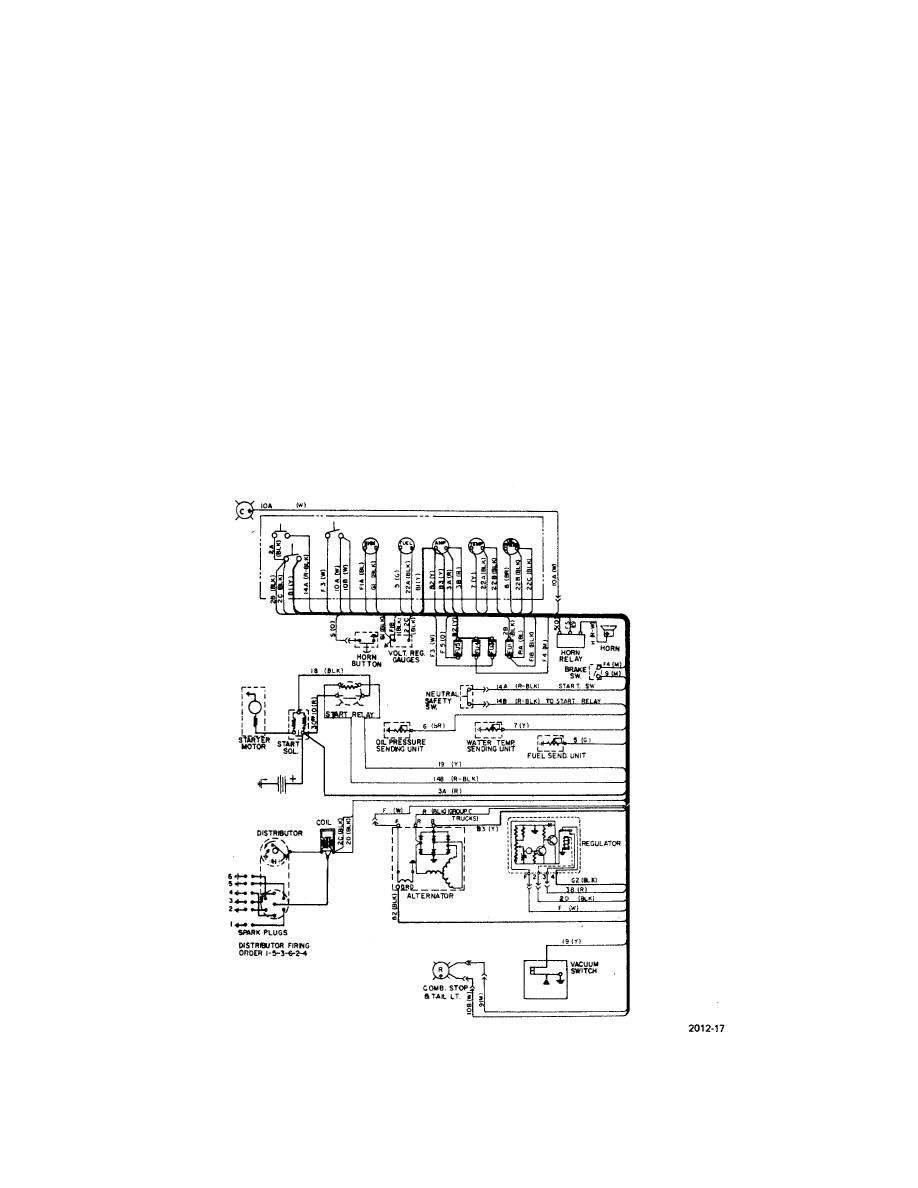 |
|||
|
|
|||
|
|
|||
| ||||||||||
|
|
 TM 10-3930-623-12
is circulated over the radiating surface by an engine-
upper connection. The radiator core divides the water
driven fan. The heat is carried away by this air stream.
into thin streams which flow into the bottom tank. In
Liquid cooling systems usually are designed to maintain
passing through the core, the water gives up heat,
a coolant temperature of about 180 degrees F. It is
transferring it through the metal conductors of the core to
desirable that normal operating temperatures be
the air stream blown through the core by the fan. An
reached as quickly as possible.
In liquid cooling
overflow pipe connected to the upper tank permits
systems, the circulation of the water can be delayed by
excess water or steam to escape.
A baffle plate
means of a thermostatically opened valve until normal
soldered inside the upper tank above the radiator-intake
temperatures are reached.
opening directs the flow of the water toward the radiator
core.
4-26. PUMP CIRCULATING
SYSTEM. The pump
circulating system uses a centrifugal pump to circulate
4-28. FAN. The fan is centrally located ahead of the
the water, to provide efficient cooling. The water pump,
radiator core and forces the air through the radiator.
driven by a V-belt, maintains circulation in the cooling
system.
4-29. THERMOSTAT.
Normal minimum water
temperatures in the cooling system are automatically
4-27. RADIATOR. The purpose of the radiator is to cool
maintained by a thermostatic valve that remains closed,
water received from the engine. The radiator consists of
to prevent coolant circulating through the radiator, until
an upper and lower tank and a core. In order to provide
the
rapid dissipation of heat, the radiator is made of copper.
Water from the engine enters the radiator through the
Figure 4-3. Wiring Diagram
4-4
|
|
Privacy Statement - Press Release - Copyright Information. - Contact Us |